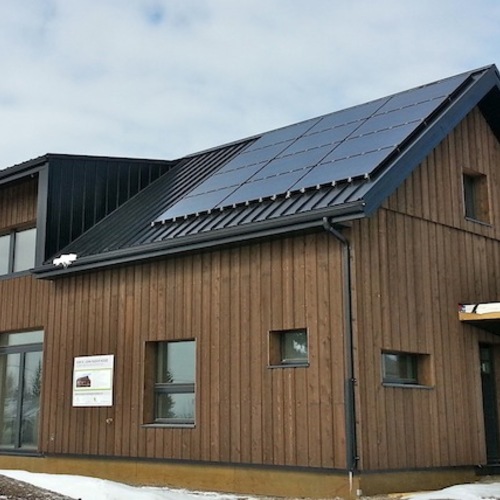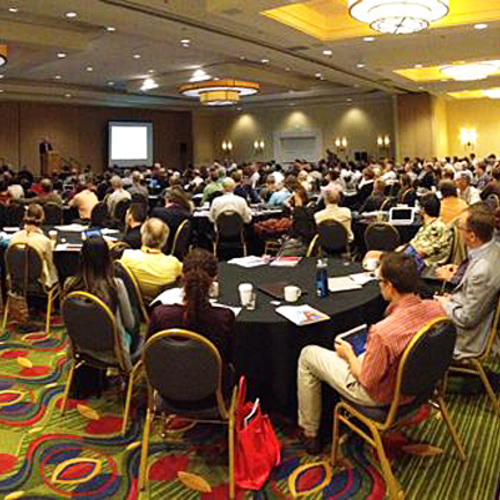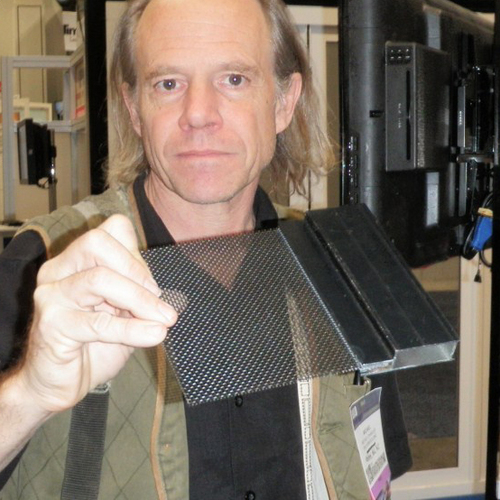
Image Credit: Martin Holladay
The NAHB Green conference is being held this week (April 29 to May 1, 2012) in Nashville, Tennessee. Several GBA employees and bloggers — including Dan Morrison, Michael Chandler, Peter Yost, Ted Clifton, and me — are attending.
Nashville has a number of famous buildings, including a full-scale replica of the Parthenon. Nashville’s Parthenon isn’t made of quarried marble, however; it’s made of concrete. So how’s the concrete quality? Do the columns resemble marble?
Like vinyl siding (which looks like freshly painted clapboard, but only from a distance), the concrete columns of Nashville’s Parthenon are less convincing up close than they are from 200 yards away. The columns have a kind of exposed-aggregate, sandy finish rather than a smooth-as-marble finish.
The Renaissance Hotel is also made of concrete
Whenever I place concrete, I aim for quality — even if I’m just filling a few Sonotubes. I want to get out the air bubbles and create a smooth finish — and I make sure the rebar is properly placed.
Why is it that modern buildings with concrete façades so often have terrible concrete quality? I’m thinking, for example, of Paul Rudolph’s Art & Architecture building at Yale, a brutalist disaster with concrete so sloppy that the rusting rebar and reinforcing mesh are exposed to the elements.
The NAHB Green conference is being held at the Nashville Convention Center, and many attendees are staying at the attached 25-story hotel, the Renaissance Nashville. The skyscraper is only 20 years old, but its concrete façade is already streaked with rust from projecting steel tie rods or mesh. (See the photo below.) It’s hard to say whether these unsightly concrete disasters are due to an architect’s ignorance or builder sloppiness. In any case, the concrete buildings of Nashville are no match for those on…
Weekly Newsletter
Get building science and energy efficiency advice, plus special offers, in your inbox.

This article is only available to GBA Prime Members
Sign up for a free trial and get instant access to this article as well as GBA’s complete library of premium articles and construction details.
Start Free TrialAlready a member? Log in















4 Comments
yale's paul rudolph hall
yale's paul rudolph hall (formerly the A&A building) was only a disaster because of a series of really poor renovations/alterations - after a massive fire. it was restored a few years ago and looks/works/performs much better. the bad concrete/exposed rebar issues seems mostly to have been builder sloppiness which was exacerbated by weather. on large projects, architects aren't specifying rebar placement/layout - and the ACI standards for structural concrete in 1963, as in the 2008 reno, required 2" of concrete for bars larger than #5, 1.5" for #5 or smaller. that standard wasn't followed in the field.
concurrent to the reno was a horrible, horrible addition by charles gwathmey.
as for a contemporary concrete building with stunning facade? look no further than morger, degelo + kerez's kunstmuseum lichtenstein - which was polished to a marble-like sheen. walls were prestressed to avoid the need for expansion joints. the swiss are some of the best when it comes to concrete.
http://www.zement.at/service/literatur/fileupl/01_11_kunstmuseum_liechtenstein.pdf
Response to Mike Eliason
Mike,
I've heard about the renovations of the A&A building at Yale, but I haven't been back to New Haven since the work was done.
Back when I was an undergraduate, in the early 1970s, the building was only a few years old, and the concrete façade was already in dreadful shape, with exposed rebar everywhere. It was a hostile, even nightmarish building to walk by. At sidewalk level, the building proclaimed a hatred of human beings. Leaning against it was a painful act.
Here is a photo of a section of the concrete façade that has no rust stains or exposed steel:
Summary of Peter Pfeiffer's comments
Thanks, Martin, for the succinct summary of Peter Pfeiffer's comments at the NAHB conference. He summarizes true-green building better than most practitioners. The good news is that designers, builders, and homeowners can adapt their ways and develop homes vastly more green than the current stock by following a few simple ideas:
-- Build small. It’s best to use less of any building material. Smaller homes have less impact on the environment both during their construction and throughout their lifetimes.
-- Remodel your home rather than building a new one. You’ll avoid the cost and environmental impact of buying an entire houseful of new materials. Focus your efforts on improving the efficiency of an existing building instead.
-- Choose long-lived high-quality building materials. Materials with a long lifespan have less environmental impact than those that wear out quickly. Plus they require less maintenance.
The details are, of course, more complicated than this. But if you neglect these principles, no amount of green adding-on will reduce the environmental impact of the original bad decisions.
Preaching to the choir - west glass, pool pumps, water heating
West Glass
I'm in a cooling-dominated climate (Florida) and I advise clients as to the best approach to west glass is a multi-tiered defense-in-depth:
0) Avoid it in the first place
1) If you must have west glass, pick a site with tall leafy trees on the west side
2) If you don't have west trees shielding your west glass, put a deep covered porch on the west side
3) If the porch is out of the question, consider deep overhangs or awnings
4) if the trees, porch, overhangs or awnings aren't doable, depress the SHGC (solar heat gain coefficient) of the west glass via insect screens, after-market films, or internal films.
5) Install light colored blinds and close them during the day.
Of course, if you are going to pull blinds on windows all day, why have the windows in the first place?
Pool pumps - I have replaced several pool pumps with Pentair Intelliflo units and documented 75-90% reduction in energy use while providing clients MORE daily hours of pump operation...my primary specialty is high performance high efficiency HVAC, but I readily and cheerfully admit that a variable speed pool pump pays back far faster than any HVAC solution in my toolbox.
Pool pumps are a 365 day load whereas HVAC is used only when needed.
South of I-40, a centrally located heat pump water heater, possibly with demand-switched recirculation if circumstances warrant, is hands down the best hot water solution...far more cost effective than all manner of solar thermal bling.
Log in or become a member to post a comment.
Sign up Log in